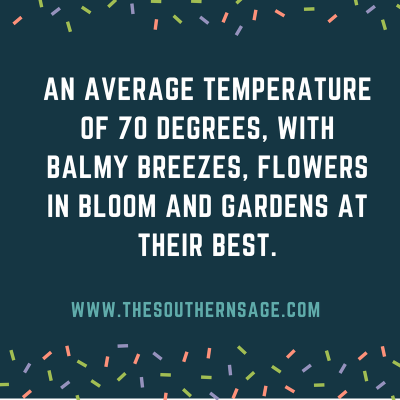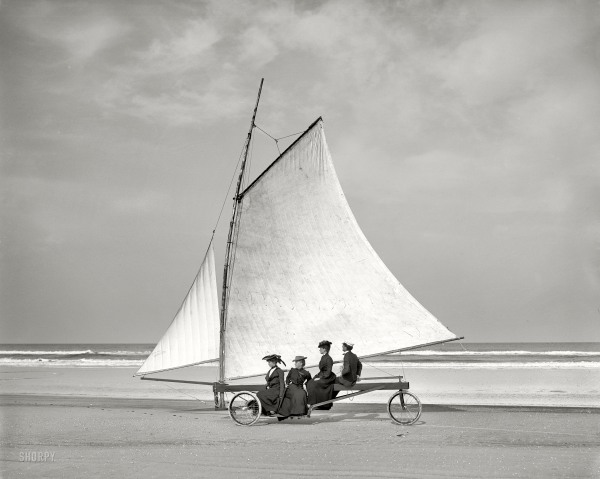
What a Connecticut Yankee Has Done.
Correspondence of The Courant.
Hotel Ormond, Ormond, Fla., April 14.
“Why don’t the northern papers say something about Florida?” inquired a gentleman from “The Hub” at the breakfast table of the Ormond this morning. “I come here every night, and naturally search my Boston papers for correspondence from Florida resorts, but I look in vain.”
“Perhaps,” we replied, “with the variety of weather they are having in New England at present, the North is a bit jealous of the South in the matter of spring climate, and thinks it just as well not to mention that farther down the coast there is an average temperature of 70 degrees, with balmy breezes, flowers in bloom and gardens at their best.”

However that may be, the Boston man’s remark was a suggestion that perhaps the Connecticut people who have visited this charming spot, and the many more who would have come if they could, might be interested in a few lines from Ormond, and an accompanying story of what one Connecticut man has been doing down here for the past twenty years.
We have been a month in Florida, and have traversed the length of the east coast, 360 miles from Jacksonville to Miami. We have seen all the beautiful hotels of the Flagler system, stopping at the Moorish palaces in St. Augustine, the Royal Poinciana at Palm Beach, and the Royal Palm at Miami. And, lastly, at the closing week of the season, we have come to lovely Ormond, and find it the most home-like, the most restful and altogether enjoyable of them all.
Ormond-by-the-Sea, fifty miles south of St. Augustine, is also Ormond-on-the-Halifax, the town lying on the west bank of the Halifax, and the hotel on the peninsula, half a mile wide, between the river and the ocean. The Halifax is really an arm of the sea, a tropical lagoon, its banks fringed with groves of palmetto, orange, oak and pine. Hotel Ormond fronts the river, its yellow towers and balconies peeping through the picturesque groves and shaded pathways of its ample grounds. Its wide plazzas invite the visitor to “Cease to think, and be content to be,” and its doorways swing side to a home-like hospitality, dispensed by its courteous proprietors, Messrs. Anderson and Price, the one a New Englander, the other a Kentuckian. The lobby bright with pots of ferns, flowers and palms, with a big Dutch fireplace where an oaken log glows on cool evenings, is the favourite indoor resort. In the office hangs a portrait of James Ormond, an English officer in the Bahamas, to whom the Spanish government gave in 1790 a grant of land, covering the town which bears his name. Here he settled and cleared large sugar plantations. Two ruined chimneys, used for sugar boiling, mark the site of these plantations, and are objective points for one of the delightful drives for which Ormond is famous. The roads here are hard and smooth, of marl and shell deposit, and one may drive for miles through the shaded hammock or along the beach, without ploughing through any tiresome sand. The beach, one of the most beautiful on the Atlantic coast, is, at low tide, a broad, smooth boulevard, where the horses’ feet resound as on a pavement, and where the wheel hardly leaves a mark; an ideal stretch of twenty miles for the bicycle or the carriage drive.

En passant, Florida may give us a lesson in the use of the wide tire. All the carriages here have wheel tires from two to three inches in width, which roll smoothly without sinking in the track, improving rather than cutting up the roads. A picturesque drive takes us to Daytona, largely a New England settlement, seven miles to the south, and called the prettiest village in Florida, with its handsome homes and shaded avenues. Going south, the drive is through the hammock, shaded by oaks and palmettos, and pines so tall that their “tiny tops seem close against the sky.” Returning by the beach, the surf rolls in on our right, and wild ducks, flocks of snipe and little fiddler crabs watch for their pray after each receding wave. Near the hotel is a neat Episcopal Church, with a rectory adjoining. Here service is held weekly during the tourist season. The Rev. John T. Huntington of Hartford is a frequent preacher here. A favourite drive with the tourist is seven miles to the north to “Number Nine,” the plantation of C. A. Bacon, a veteran of the Seventh Connecticut Volunteers, wounded at Hilton Head and a living example of what Yankee pluck, brains and energy will do without other capital.
After the close of the war, Mr. Bacon took up a government grant of three-quarters of a mile front on the peninsula between the Halifax and the ocean. In 1876 he left New Britain for his new home, arriving in the Florida wilderness in March, with 50 cents in his pocket. He built a palmetto hut, five miles from a human habitation, and began clearing his ground, working all day, and often by moonlight. Deer, bears, possums, ‘coons and owls were his only companions. Mr Bacon named his camp “Number Nine,” from Jim Fenton’s camp in the story of “Seven Oaks” by J.G. Holland. His first house, to which he brought his wife, was covered with cypress shingles made by himself from logs brought ten miles on a raft. The frame of the house was built from the deck plank of the West India steamer Vera Cruz, wrecked off Ormond in 1880, and three of the doors are from the steamer’s cabin. Mr. Bacon gathered a large amount of useful stores from the wreckage, and buried the bodies washed ashore.

His first business venture was the setting of a half acre of seedling orange trees, which in two years netted him $1,600. He has kept on working and clearing, until now he has a fifteen-acre orange grove, under high cultivation, fine seedling nurseries, an established business in canned fruits, and a beautiful garden, with plants and shrubs from every corner of the globe. The late freeze made disastrous work with his orange grove, but, with his true wife for a help-meet, he works bravely on. His 50 cents has become $50,000 – counting property and yearly profits. He has just built a pretty new house, in colonial style, and as we admired the polished mahogany finish of hall and staircase, he told us that the wood was washed ashore from a South American vessel after a storm. He showed a field of Para grass from which he gathers a crop of eight tons to the acre, a crop maturing in six weeks. We also saw a Yankee apple tree, which, losing all reckoning in the Florida climate, was exhausting itself with two crops a year.
Mr. Bacon is still a New Englander at heart, with a genial manner, and an inexhaustible fund of stories. Visitors are all welcome, but especially those from his own state, to whom he is proud to relate that he fought for the Union under General Hawley, was in thirteen battles, three times wounded, and is still hale and hearty. – J.
- Hartford Courant (Hartford, Connecticut) 23 April 1897
 Marsanne Petty conducts historical research about 18th century southern United States and environmental history. To get more great updates and original history, sign up at The Southern Sage. To get her to help you with your own research project, email mapetty[at]gmail.com.
Marsanne Petty conducts historical research about 18th century southern United States and environmental history. To get more great updates and original history, sign up at The Southern Sage. To get her to help you with your own research project, email mapetty[at]gmail.com.

You must be logged in to post a comment.